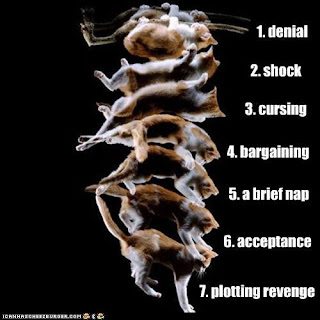
Several months ago I received a request asking what colors of pastels I use. When I pulled out my bins, they were all such a mess I couldn't even read the labels on them. So, I wiped them all down, scrubbed my bins, and sorted and made a list to share with you. Yay, one step ahead for New Year's resolutions!
Some I barely use, a few I've never used, and some I use regularly. I placed an asterisk by my favorites. Some of the Derwents I've had for over 20 years and I think they have a new naming convention, but I included them here anyway. Also, both the Derwents and the Grumbachers are hard pastels. This means that the stick must be shaved to get pastel dust suitable for application. The others are all soft pastels, so I just rub my brushes over the stick to load the brush with dry pigment. The Great American Art Works and Unison sticks are the newest additions, I like them quite a bit, but they are too fat for my bins! I still might indulge in trying some more colors in these brands, but first I need to find a storage solution for them.
I am always looking for good, staple colors such as good base colors, good dark browns, yellows that make believable buckskins, you get the idea. This is why I dabble in different brands. I purchase my pastels open stock, which means by the stick. Since I order online, I don't always know what I'm getting. That would explain the range of pinks I have! I do most of my purchasing from http://www.jerrysartarama.com/. They usually have sales going on, but it is easy to load a shopping cart quickly with so many tempting pastel selections.
REDS
Dark Reds
Sennelier Brand:
046 – really red
076
075 – more burgundy
265 – red
460
Orange Reds
Derwent 64B
Sennelier Brand:
084
462
194* or
195*
434
458
Winsor Newton Brand:
Caput Mortuum Tint 5*
Burnt Sienna Tint 5*
PINKS
Sennelier Brand:
093 – dark
083 – bright
085
095 – paler
088 – really pale
GREYS
Dark Greys/Black
Black generic sticks
Sennelier Brand:
515 – dark
513
816* – shimmer
426 –dark warm grey
517 – dark warm grey
Great American Art Works Black Pearl 318
Charcoal in black*
Cool Greys
Winsor Newton Brand:
Payne’s Grey Tint 2
Payne’s Grey Tint 1
Grey tones from generic sticks set
Warm Greys
Winsor Newton Brand:
Davy’s Grey Tint 2
Sennelier Brand:
431
432
415
416
417
428
440
PEACH
Great American Art Works Brand:
Cinnamon 140.4*
Chestnut 135.4*
Sennelier Brand:
825 metallic
818 shimmer
817 shimmer
020* - base color
011* - base color
Grumbacher 4039
YELLOW/PUTTY
Unison Brand:
Grey 25
Grey 23
Grey 21 – good for buckskin
Derwent Brand:
Golden Brown 59
Brown Ochre 57
Burnt Yellow Ochre 60
Sennelier Brand:
106* - medium
613 – straw yellow
512 - dark
104 – dark
120 – dark
824 – gold metallic
819 – shimmer
820* - shimmer
BRONZE
Sennelier Brand:
107* - base color
063* or
062*
819 – bronze shimmer
Winsor Newton Brand:
Raw Umber Tint 2- use with caution, raw umber can give greenish tinge
Raw Umber Tint 3 - use with caution, raw umber can give greenish tinge
WHITE/CREAM
Sennelier Brand:
346
021
132
126
108*
440
065
821 – shimmer
801
Derwent Chinese White 72
White Charcoal
White generic from set
BROWNS
Great American Art Works Dark Brown 810.1*
Grumbacher Brand:
4051
253P
Derwent Brand:
66B
79B
54B
Sepia 53
Sennelier Brand:
001 – burgundy/purply brown
456 – dark
058*- dark
190*
192*
060
436* - dark red
003 – dark red
061
003
439* or
438*
Winsor Newton Brand:
Burnt Umber Tint 4*
Burnt Umber Tint 5*













































